LAPIS LAZULI


 Characteristics of the mineral.
Characteristics of the mineral.
Sodium aluminosilicate, opaque mineral 6Na (AlSiO4) · Na2S, in which a part of silicon atoms Si is replaced by sulfur atoms in the form of anions S3 - . It can not be transparent and translucent. The more sulfur anions, the thicker the blue color of lapis lazuli. In its bright blue version, the sulfur content reaches 0.7%. The rock, containing in addition to lazurite calcite CaCO3 (white), pyrite FeS2 (golden inclusions) and other minerals, is called lapis lazuli. Lapis lazuli is a fairly soft and brittle mineral, easily processed and polished. Its color is from blue to bluish-gray or greenish-gray, but the best stones, of course, are blue or blue-violet, and also saturated blue. Lapis lazuli can additionally be painted in blue or imitated by painting in blue white stones. To distinguish a fake or dyed lapis lazuli from a natural color is simple - just drop it for a while in a glass of water, a fake or colored lapis lazuli will color the water blue. On a wet body, the surface-colored lapis lazuli leaves a blue trace. Attention - lazurizes opaque and does not shine !!
This stone does not have transparency and bright shine, there is no play of facets. One color, thick, dense blue. From time immemorial, the infinitely azure eye of heaven attracts the eye of man. Lazurite can not be confused with any other mineral: a dense velvet (almost without a shine) of blue permeates snow-white marble, spreading whimsical spots and uneven veins. Inside these clearly torn contours there are countless small islets of marble. But lazurite of the highest grade is devoid of these defects, it is only allowed to include gold stars of pyrite.
Natural stones often have white veins. Blue and light blue smearing streaks usually indicate that the stone was additionally tinted (the more blue is lazur, the more expensive it is). Learn lapis lazuli and on heat resistance: on ignition, it only gets even more blue. Grated lapis lazuli was used as a non-burning ultramarine pigment. Ultramarine was a precious paint, it did not burn out in the sun and was not afraid of dampness and fire. Paint was considered indispensable in painting and painting expensive clothes. Bright and sparkling in the sunlight, the lapis lazuli becomes dark and gloomy with candles and electric lighting. Lazurite is found only very high in the mountains. In lapis lurium, chlorine ions are located in the corners and in the center of the cube in the tetrahedral environment of sodium ions. The color of the line is light blue. Highly appreciated are samples of dark blue lapis lazuli with visible inclusions of golden pyrite (like stars in the night sky). The richest deposits of lapis lazuli are found in Afghanistan and Tajikistan, where such varieties are distinguished: the most valuable indigo-blue niili, the less valuable celestial blue asmani and cheap sufsi. Copies in Badakhshan are the oldest.
This beautiful bright blue stone, like a dark southern sky strewn with golden stars, has been used by man since ancient times. In the VI cc. BC. E. He was called a sapphire. In ancient times, this complex stone from Afghanistan fell into China, Egypt, Byzantium and Rome. The modern name of this mineral - lapis lazuli - appeared in the 18th century. Crystals in the form of an octahedron or rhombododecahedron are rare. Usually lazurite is found in the form of fine, fine and medium-grained aggregates, is part of the rock called lapis lazuli. It is formed by calcite or dolomite, diopside and phlogopite, there are feldspars, sodalite, pyrite, etc. Crisp. The color of the dash is blue.
Jewelery lapis lazuli is a dark blue polymineral aggregate with no visible light inclusions, in which the grains of lapis lazuli closely coalesce with other minerals and possible inclusions of pyrite, increasing its price and emphasizing the authenticity of the stone. To the jewelry varieties is dense lapis lazuli blue, cornflower blue and purple. It is bordered by cabochon or plates. In lower grades, spots of white, blue and gray color are allowed, occupying not more than 15% of the total surface area of the stone, respectively. In the most expensive lapis lazuli from Badakhshan (Afghanistan), golden sparkles of impregnations of pyrite shine. In quality Pamir lapis lazuli is not inferior to Badakhshan.
Lighter azure or lazurite with white and yellow inclusions is an expensive ornamental stone of non-quality quality. Opaque grains of lapis lazuli have an isometric shape or elongated, sinuous outlines. Lapis lazuli from the shores of the lake. Baikal is a blue stone of various shades with white spots and stripes intertwined in beautiful patterns (in this sort, impregnations of pyrite are most often absent). When the lazurite is heated, its color becomes denser, dark blue. Nowadays, various decorations are made of lapis lazuli: rings, brooches, earrings, pendants, beads, balls, eggs, caskets, etc.
Magic properties of stones.
Lazurite is the talisman of diplomats and all people who have to be in large societies or often receive strangers, for example, doctors, etc. The stone brings knowledge of the truth, reveals secrets, gives luck and prosperity. Lapis lazuli is also an amazing talisman of love: it protects human relations from the intrusion of "outsiders", strengthens faith in each other, pacifies and promotes mutual understanding. The stone still serves well those who want to renew their lives, test their capabilities, discover new ones, including helping and reorganizing financial affairs. As an amulet, he protects the owner from insults and undeserved attacks, slander, slander, and the evil people make him repent and apologize, becoming a sincere and kind person. It was intended to subdue the weakness often associated with people born under the sign of Libra - insufficient consistency, changeability in friendship, love. Those who are born under the signs of Cancer and Capricorn, should beware of this stone. Like sapphire and turquoise is a symbol of the beyond, a symbol of the spiritual sky, which can only be reached by one who passes through death.



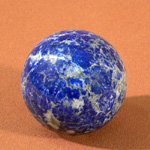
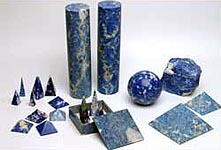

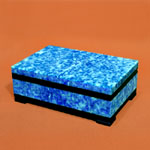

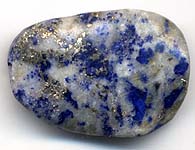
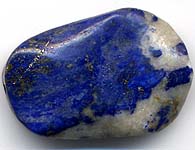
Poisonous and radioactive dangerous stones and minerals
** - poisonous stones and minerals (mandatory check in the chemical laboratory + explicit indication of toxicity).
** - radioactive stones and minerals (mandatory check on the standard dosimeter + ban on open sales in the case of radioactivity over 24 milli / g / h + additional measures of population protection).
All rare stones are subject to mandatory inspection at the standard dosimeter for the permissible level of radiation and in the chemical laboratory for the absence of poisonous and evaporating components that are dangerous to humans and the environment.


Comments
When commenting on, remember that the content and tone of your message can hurt the feelings of real people, show respect and tolerance to your interlocutors even if you do not share their opinion, your behavior in the conditions of freedom of expression and anonymity provided by the Internet, changes Not only virtual, but also the real world. All comments are hidden from the index, spam is controlled.